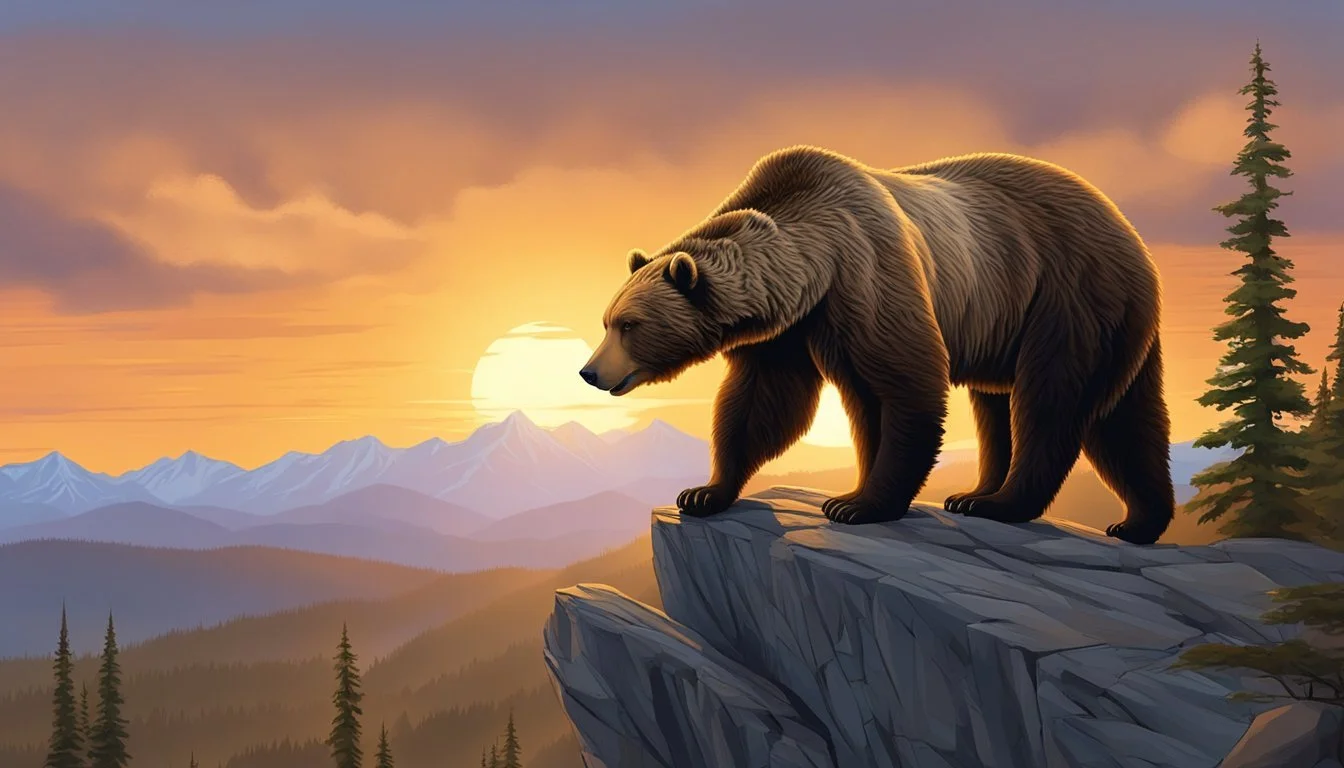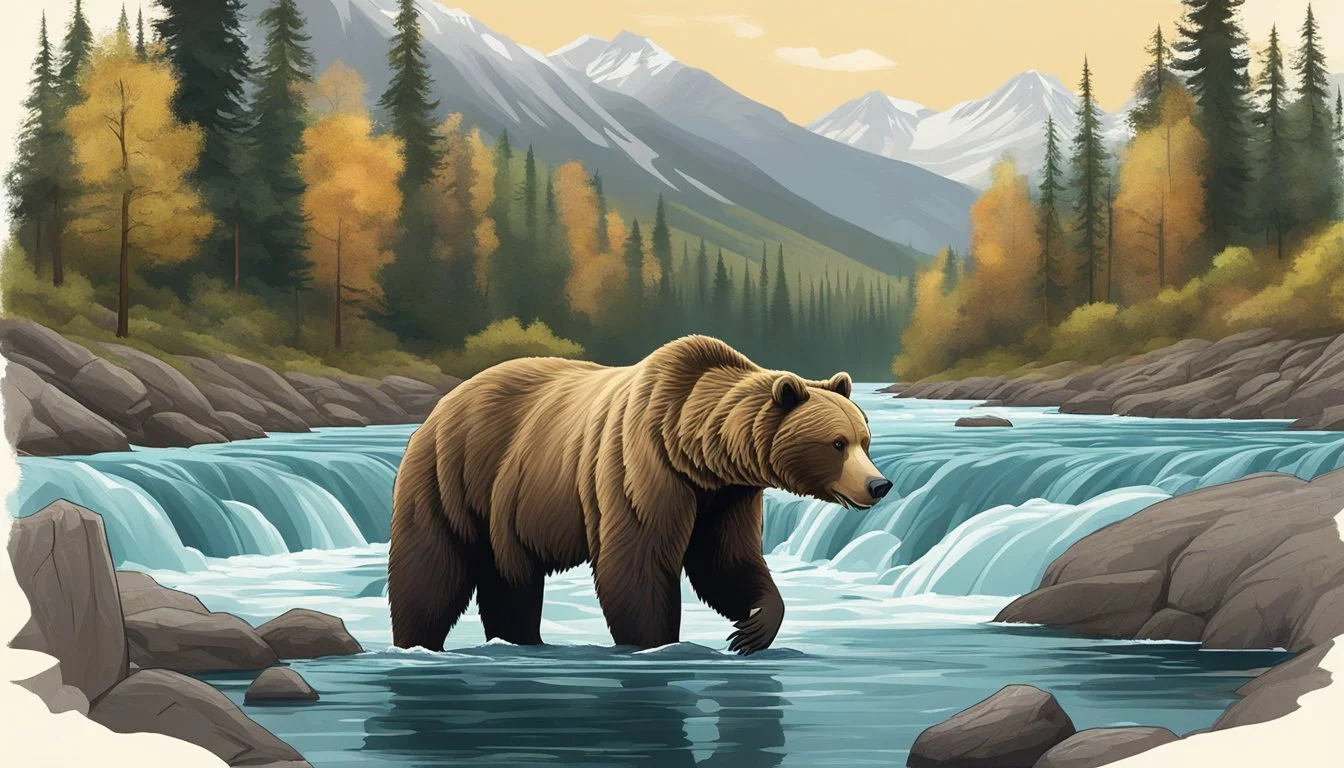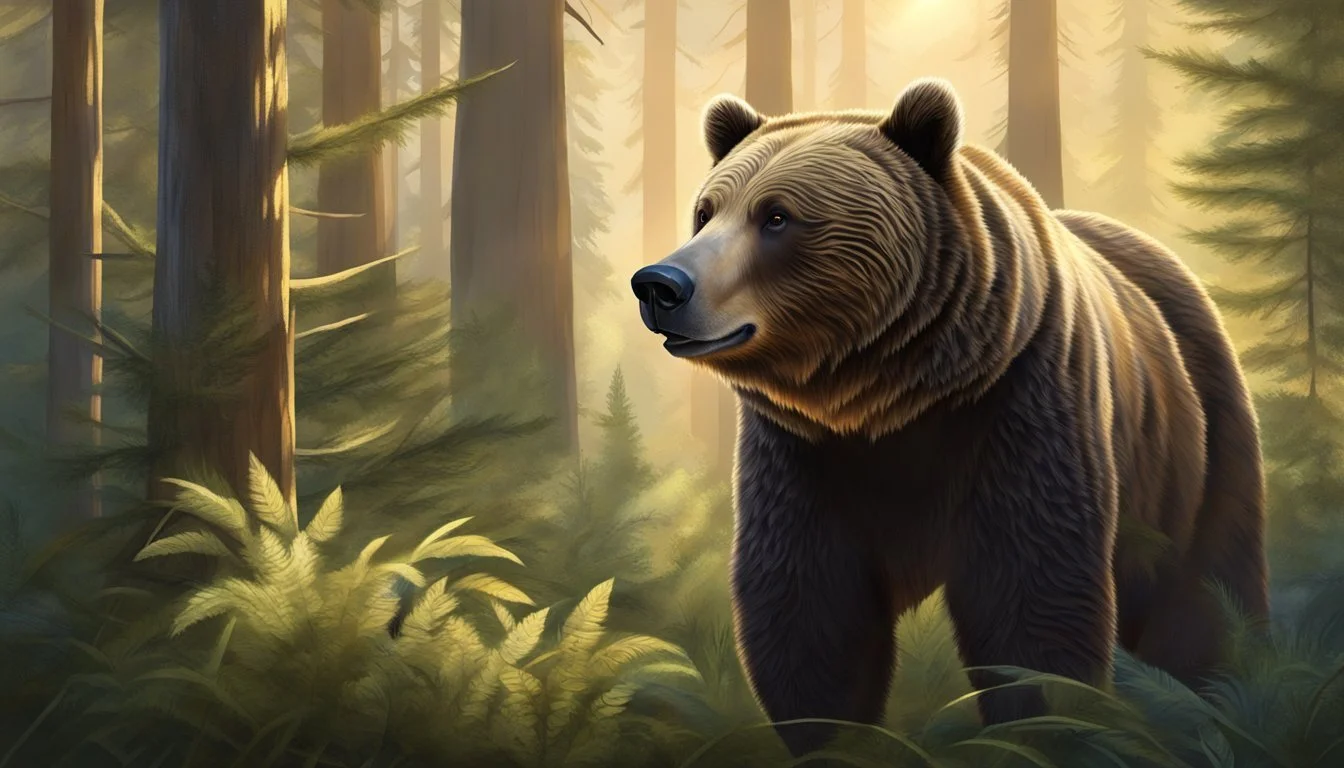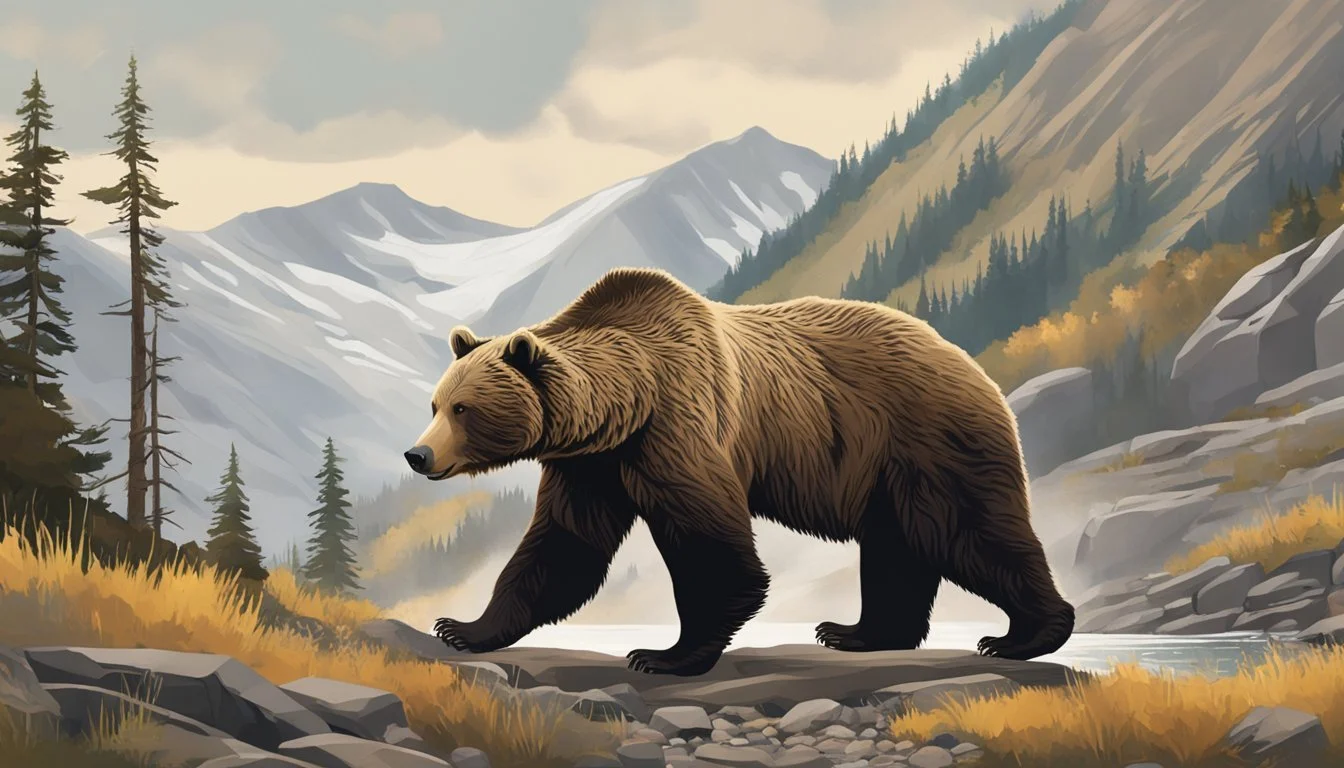Man vs. Beast: The Shocking Tale of 'Grizzly Man' That Left America Speechless
"Grizzly Man" is a captivating 2005 documentary directed by Werner Herzog that explores the life and tragic death of Timothy Treadwell, a wildlife enthusiast who lived among grizzly bears in Alaska. The film weaves together Treadwell's own footage with interviews and Herzog's narration to create a complex portrait of a man driven by passion and idealism.
Herzog's documentary offers a nuanced examination of the relationship between humans and nature, challenging viewers to consider the boundaries between wilderness and civilization. Through Treadwell's intimate interactions with the bears, captured on over 100 hours of self-recorded video, the film provides unprecedented access to the daily life of these powerful creatures.
The documentary delves into Treadwell's 13 summers spent in Katmai National Park, where he believed he was protecting the bears from poachers and other human threats. It culminates in the shocking events of October 2003, when Treadwell and his girlfriend Amie Huguenard were killed by a grizzly bear. "Grizzly Man" raises thought-provoking questions about conservation, human nature, and the consequences of pushing the limits of our coexistence with wild animals.
The Visionary Behind 'Grizzly Man'
Werner Herzog's documentary "Grizzly Man" explores the life and death of Timothy Treadwell, a passionate bear enthusiast. The film showcases Herzog's unique directorial approach and Treadwell's deep connection with nature.
Profile of Werner Herzog
Werner Herzog, a renowned German filmmaker, brought his distinctive vision to "Grizzly Man." Known for his unconventional storytelling, Herzog's approach to documentary filmmaking often blurs the line between fact and fiction.
In "Grizzly Man," Herzog masterfully weaves together Treadwell's own footage with interviews and his own narration. His critical yet compassionate perspective provides depth to the narrative.
Herzog's style is marked by philosophical musings and a keen eye for the complexities of human nature. This approach elevates "Grizzly Man" beyond a simple wildlife documentary, turning it into a profound exploration of man's relationship with nature.
Timothy Treadwell's Passion for Bears
Timothy Treadwell, the central figure of "Grizzly Man," dedicated 13 summers to living among grizzly bears in Alaska's Katmai National Park. His unconventional methods and deep affection for these wild animals formed the core of Herzog's documentary.
Treadwell's footage, captured over his years in the wilderness, provides an intimate look at his interactions with the bears. His self-appointed role as a conservationist and protector of these animals reflects his intense passion and dedication.
However, Treadwell's approach was controversial. His close proximity to the bears and anthropomorphic view of them raised concerns among wildlife experts. Tragically, Treadwell and his girlfriend Amie Huguenard met their end in a bear attack in 2003, adding a somber note to his legacy.
The Heart of 'Grizzly Man': Katmai National Park
Katmai National Park in Alaska serves as the stunning backdrop for Timothy Treadwell's grizzly bear encounters in the documentary "Grizzly Man". This vast wilderness area showcases the raw beauty and biodiversity of the Alaskan landscape.
Exploring Alaska's Wilderness
Katmai National Park spans over 4 million acres of pristine Alaskan wilderness. Established in 1918, the park is renowned for its volcanic landscapes, including the Valley of Ten Thousand Smokes.
Rugged coastlines, dense forests, and winding rivers characterize the terrain. The Brooks River provides a prime viewing area for bear activity, especially during salmon runs.
Visitors can access the park via floatplane or boat. Popular activities include wildlife viewing, hiking, and sport fishing. The park's remote location ensures a truly immersive wilderness experience.
Flora and Fauna
Katmai's diverse ecosystems support a rich variety of plant and animal life. The park is home to over 2,000 brown bears, the stars of Treadwell's footage.
Other notable wildlife includes:
Moose
Wolves
Caribou
Bald eagles
The coastal areas host seals, sea lions, and various seabirds. Salmon play a crucial role in the ecosystem, supporting both bears and other wildlife.
Plant life varies from coastal sedge meadows to interior spruce forests. Wildflowers bloom in abundance during the short summer season, adding splashes of color to the tundra.
The Majesty of Grizzly Bears
Grizzly bears stand as iconic symbols of the North American wilderness, commanding respect and awe. These powerful creatures play a crucial role in their ecosystems while captivating the imagination of nature enthusiasts and conservationists alike.
Characteristics of Grizzly Bears
Grizzly bears are massive mammals, weighing up to 1,500 pounds and standing 8 feet tall on their hind legs. Their distinctive hump between the shoulders is a mass of muscle, giving them incredible strength for digging and foraging.
Their thick fur ranges from light blond to dark brown, often with silver-tipped guard hairs that create a "grizzled" appearance. Grizzlies have long, curved claws ideal for digging and catching prey.
These bears possess keen senses, particularly their sense of smell, which is seven times more powerful than a bloodhound's. They are also highly intelligent, with problem-solving abilities and excellent memory.
Significance of Bears in Nature
Grizzly bears are keystone species, playing a vital role in maintaining ecosystem balance. As omnivores, they help disperse seeds through their droppings, contributing to plant diversity.
Their feeding habits, such as catching salmon, transfer nutrients from aquatic to terrestrial ecosystems. This process enriches the soil and supports vegetation growth.
Grizzlies' presence indicates a healthy, diverse ecosystem. Their conservation efforts often protect large tracts of wilderness, benefiting numerous other species.
Wildlife experts study grizzly populations to gauge environmental health. Changes in bear behavior or numbers can signal shifts in climate, habitat quality, or food availability, making them important indicators of ecosystem well-being.
Cinematic Journey through 'Grizzly Man'
Werner Herzog's documentary 'Grizzly Man' provides a captivating visual experience through its masterful cinematography and strategic use of archival footage. These elements work together to immerse viewers in Timothy Treadwell's world and the Alaskan wilderness.
Analysis of Cinematography
Herzog's cinematography in 'Grizzly Man' captures the raw beauty of Alaska's landscape. Wide shots showcase the vast, untamed wilderness that Treadwell called home for 13 summers. Close-ups of grizzly bears highlight their power and unpredictability.
The film's visual style shifts between Treadwell's amateur footage and Herzog's professional shots. This contrast emphasizes the different perspectives on nature and wildlife. Herzog's cinematography often frames Treadwell against the backdrop of mountains or dense forests, visually reinforcing his isolation.
Lighting plays a crucial role in setting the mood. Natural light dominates, creating an authentic atmosphere. Scenes filmed during the golden hour cast a warm glow, while overcast skies contribute to a sense of foreboding.
Use of Archival Footage
Treadwell's own recordings form the backbone of 'Grizzly Man'. These amateur videos provide intimate glimpses into his life among the bears. The footage ranges from breathtaking nature scenes to Treadwell's candid monologues.
Herzog skillfully weaves this archival material into the narrative. He juxtaposes Treadwell's optimistic outlook with more sobering commentary. This technique creates a layered portrayal of the protagonist and his environment.
The archival footage also serves as a time capsule. It preserves Treadwell's interactions with wildlife and his evolving relationship with nature. Herzog's editing choices highlight key moments that shed light on Treadwell's character and motivations.
Lions Gate Entertainment, the film's distributor, allowed Herzog creative freedom in using this sensitive material. This decision contributed to the documentary's authenticity and emotional impact.
Themes and Ideologies
"Grizzly Man" explores the complex relationship between humans and nature, focusing on idealism in wildlife conservation and the clash between civilization and wilderness.
Man vs. Wild
Timothy Treadwell's story exemplifies the tension between human civilization and untamed nature. The documentary portrays his attempt to bridge this gap by living among grizzly bears in Alaska. Treadwell's actions challenge societal norms and highlight the inherent dangers of wild animal encounters.
His approach raises questions about the boundaries between humans and wildlife. The film shows Treadwell's deep connection with the bears, but also the fatal consequences of his idealistic view of nature.
The Role of Idealism in Conservation
Treadwell's passionate dedication to protecting grizzly bears stems from a strong idealistic belief in wildlife conservation. The documentary examines how this idealism shaped his actions and ultimately led to his demise.
His methods, while controversial, brought attention to bear conservation issues. The film explores the impact of Treadwell's work on public perception of wildlife protection.
It also questions the effectiveness of extreme approaches to conservation. Treadwell's story serves as a cautionary tale about the dangers of romanticizing wild animals and underestimating their primal instincts.
Human Influence on Wildlife
Human activities profoundly affect wildlife populations and habitats. Poaching threatens many species, while dedicated rangers and conservationists work tirelessly to protect animals and their ecosystems.
The Impact of Poaching
Poaching poses a severe threat to wildlife, particularly endangered species. Illegal hunting of brown bears for their valuable parts has led to population declines in some areas. Poachers often target bears for their gallbladders, paws, and fur, which fetch high prices on the black market.
This illegal activity disrupts ecosystems and can have cascading effects on other species. It also undermines conservation efforts and threatens biodiversity. Poaching not only reduces animal numbers but also alters their behavior, as surviving animals become more wary of humans.
The Work of Rangers and Conservationists
Rangers play a crucial role in wildlife protection. They patrol protected areas, monitor animal populations, and enforce anti-poaching laws. These dedicated individuals often risk their lives to safeguard wildlife from illegal activities.
Conservationists contribute through research, habitat restoration, and public education. They study animal behavior, track population trends, and develop strategies to mitigate human-wildlife conflicts. Their work is essential for creating effective wildlife management plans.
Many conservation programs focus on brown bears, aiming to protect their habitats and reduce human-bear conflicts. These efforts often involve community engagement, promoting coexistence between humans and wildlife in shared landscapes.
Legacy and Impact
"Grizzly Man" left an indelible mark on documentary filmmaking and wildlife conservation. The film's portrayal of Timothy Treadwell's life and tragic death sparked widespread discussions about human-wildlife interactions and environmental ethics.
Critics and Rotten Tomatoes Score
"Grizzly Man" received widespread critical acclaim upon its release. The documentary holds an impressive 85% approval rating on Rotten Tomatoes. Critics praised Werner Herzog's bold and provocative approach to telling Treadwell's story.
Many reviewers highlighted the film's ability to raise complex questions about nature, humanity, and the boundaries between them. The documentary's use of Treadwell's own footage was particularly lauded for providing an intimate look into his world and mindset.
Public Reception and Sundance Film Festival
"Grizzly Man" made a significant impact at the Sundance Film Festival, where it premiered in 2005. The film's compelling narrative and unique perspective on wildlife conservation resonated strongly with audiences.
Public reception mirrored critical acclaim, with many viewers fascinated by Treadwell's passion and the ethical questions raised by his actions. The documentary sparked debates about wildlife protection and the ethics of human intervention in natural habitats.
"Grizzly Man" became one of Discovery Docs' most notable releases, further cementing its place in documentary film history. The film's success helped bring wider attention to wildlife documentaries and conservation efforts in Alaska's national parks.
Exploring the Grizzly Man Influence
"Grizzly Man" left an indelible mark on documentary filmmaking and popular culture. The film's raw portrayal of Timothy Treadwell's life among grizzly bears sparked discussions about human-wildlife interactions and documentary ethics.
Influence on Modern Documentaries
Werner Herzog's "Grizzly Man" pioneered a new approach to documentary storytelling. The film blended Treadwell's own footage with Herzog's narrative, creating a unique perspective. This technique inspired many subsequent documentaries to incorporate found footage and personal archives.
"Grizzly Man" also raised questions about the filmmaker's role in shaping the narrative. Herzog's decision to include his own commentary and interpretations became a model for more subjective documentary styles.
The film's success on platforms like Tubi has made it accessible to new audiences, further extending its influence on aspiring filmmakers.
Cultural Reflection on Grizzly Man
Treadwell's story captured public imagination, prompting debates about conservation and human limits. The film sparked conversations about the ethics of wildlife interaction and the romanticization of nature.
"Grizzly Man" became a touchstone for discussing mental health and obsession. Treadwell's dedication to his cause, despite the risks, continues to fascinate viewers and researchers alike.
The Grizzly People organization, founded by Treadwell, gained attention through the film. This increased awareness of bear conservation efforts and wildlife protection initiatives.
The documentary's portrayal of Treadwell remains controversial, with some viewing him as a misguided idealist and others as a passionate conservationist.
Conclusion
"Grizzly Man" remains a powerful and thought-provoking documentary. It offers a unique glimpse into Timothy Treadwell's life among the bears of Alaska.
The film raises important questions about conservation, human-wildlife interactions, and the boundaries between nature and civilization. Treadwell's passion for grizzly bears is evident throughout the footage.
His methods and approach to conservation were controversial. They sparked debates about wildlife protection and responsible environmental stewardship.
The documentary's legacy extends beyond Treadwell's story. It continues to influence discussions on wildlife filmmaking, conservation ethics, and human relationships with nature.
"Grizzly Man" serves as a cautionary tale. It highlights the potential dangers of anthropomorphizing wild animals and underestimating their innate behaviors.
The film's impact on public perception of grizzly bears and conservation efforts is significant. It has contributed to ongoing dialogues about wilderness preservation and human involvement in natural ecosystems.
Ultimately, "Grizzly Man" presents a complex portrait of a man driven by his love for nature. It challenges viewers to consider their own relationship with the natural world and the responsibilities that come with it.






